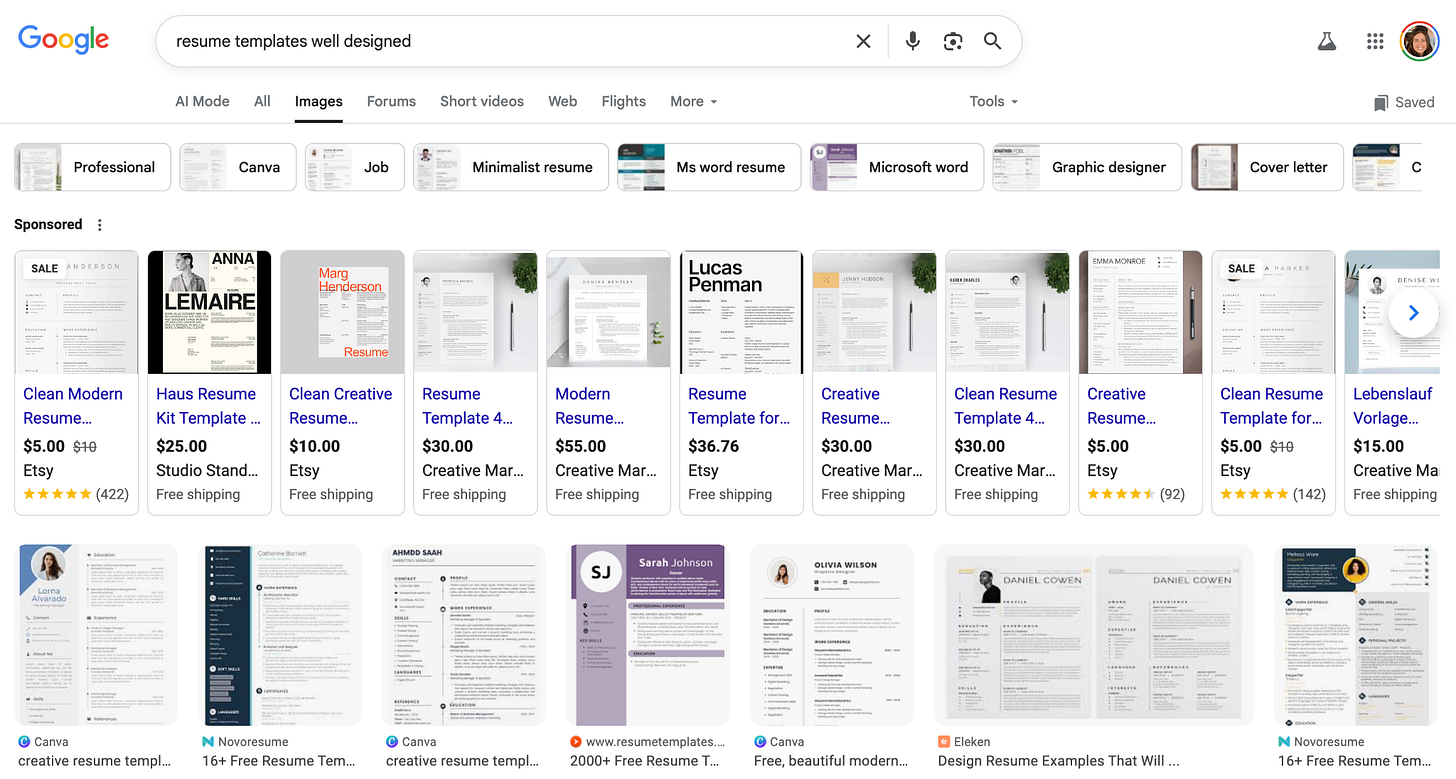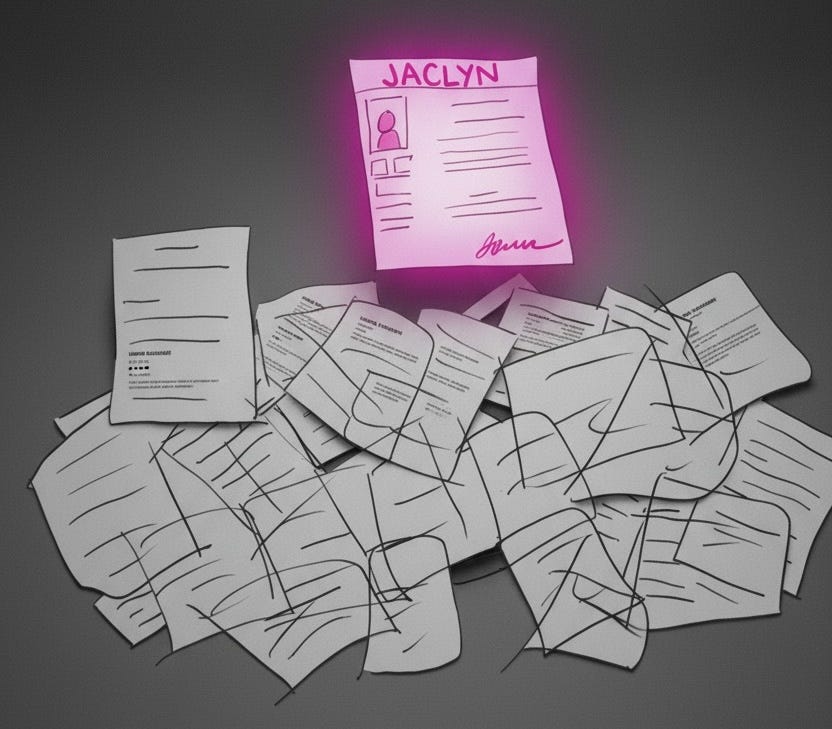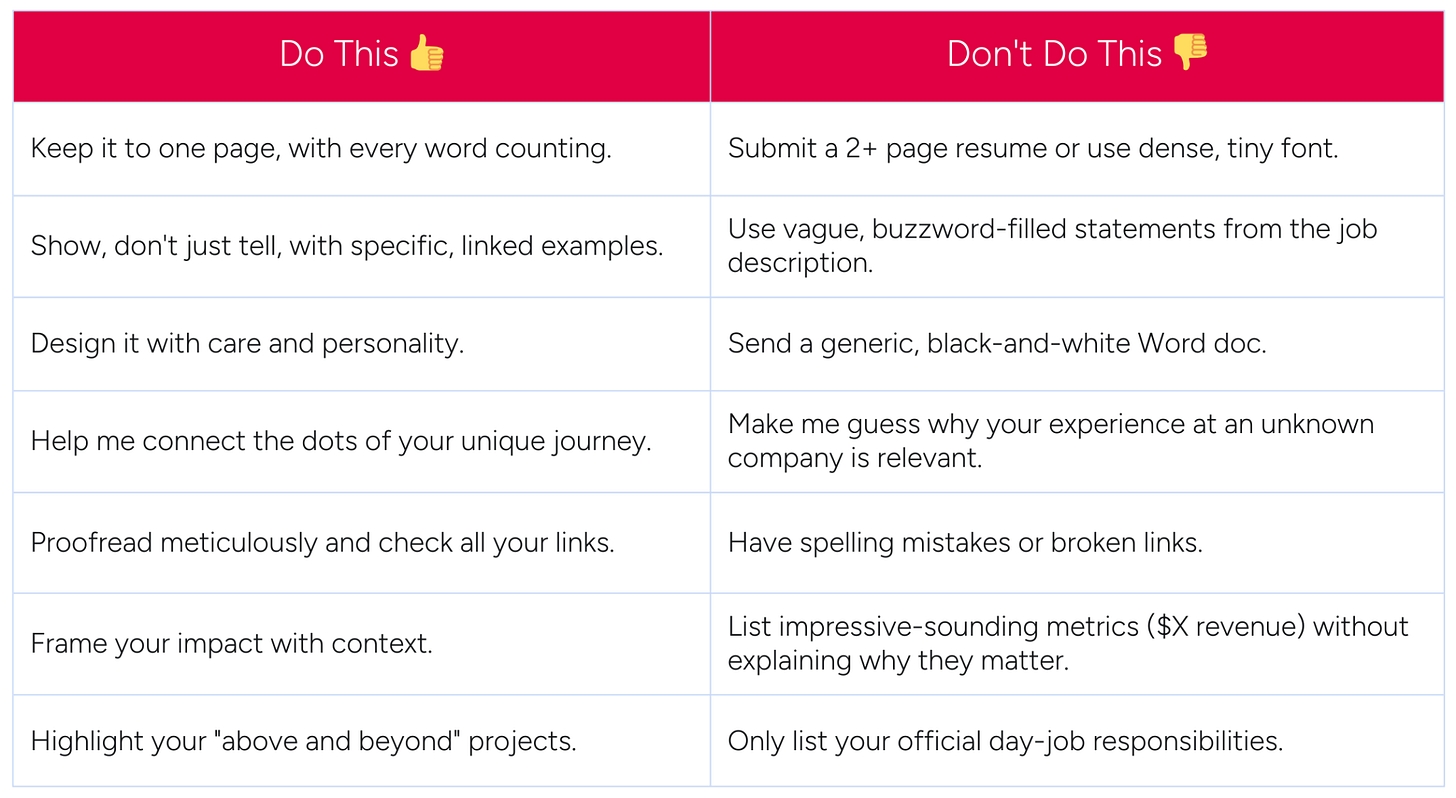What I Look For in an AI PM - Part 2: The Resume Test
The good, the bad, and the downright avoidable - a tactical guide to the resume screen
Reviewing applications for the Senior Product Manager role on my team takes time. A lot of time. I’ve even had AI help me with parts of the process, creating a prompt based on the six characteristics I wrote about in Part 1 to see if Gemini could give me a quick take on resumes. The challenge? Resumes, as they’re often written, don’t really reveal that level of depth.
So, for now, I still resort to personally scanning every application, looking for a spark - something that catches my eye and signals that if I dig deeper, those core characteristics might shine through.
This is where my multi-step hiring process comes in:
A resume scan to look for that initial spark.
A set of take-home questions for candidates who pass the first screen.
Interviews with the team for those who impress with their answers.
With each round, the candidate pool narrows until the right PM is found. This post is all about clearing that first hurdle - the resume scan. After reviewing over 100 applications, here are the dos and don’ts that I’ve found truly separate the signal from the noise.
First Impressions: What I'm Looking For
Brevity is a Feature
Your resume should be one page. Two is a stretch. I don’t need to read everything you’ve ever done - I need the facts that matter for this job. This means your resume should be customized for each specific PM role you apply to. Yes, that's work, but that’s also where you should be using AI to help you! Start with a “Master Resume” with all your detials, then prompt AI to help you pull out the relevant ones based on the different job descriptions. And remember - even a single-page resume can be too long if the words aren't intentional. Make every word count.
Narrative is Everything
Telling a compelling story is a critical PM skill. Your resume is the story of you. Make sure you’re telling a story worth reading. The fourth characteristic I look for is "Compelling Product Storytelling," and your resume is my first test of that. Don't just quote the job description back to me - tell me exactly what about you and your experience meets it. When I see "Experience shipping innovative consumer products from concept to launch," it tells me you can copy and paste, nothing more. Your job is to provide evidence, not just check a box.
Craft and Detail Matter
A visually well-designed resume shows craft and intentionality. There is no shortage of easy-to-use tools like Canva to help you create something that isn’t just a black-and-white page of dense text. I feel silly saying this - but you could even “just Google it” to get some inspiration:
There’s no reason these days to have a bad looking resume. Give it some personality! And please, no spelling mistakes or broken links. Seriously.
Context is King
Don't make me work to understand your journey. If you worked at a small company I’ve likely never heard of, tell me what it is in a quick statement. If you're transitioning from a different domain - say, from building compliance tools to a creative AI role - help me connect the dots on why your experience is relevant. If you can make your fit obvious, you’re already ahead.
Putting it into Practice: Examples from the Field
Here are some specific, real-world examples (with identifying details changed) of vague statements and how to think about them:
Vague: “Senior PM with [X] years of experience, leading cross-functional teams to develop innovative solutions that drive substantial revenue growth [$X million].”
My take: I have no context for what this means. Is that revenue number impressive for your sector? Driving millions on an Ads team at a FAANG company is very different from doing so as a startup founder. Your job is to frame your impact in a way I can understand.
Vague: “Led the full lifecycle of a new 0-to-1 product, taking an initial idea and defining its path to a successful public launch that onboarded key industry partners.”
My take: What was the product? How important was it? How big of a launch was this? Why were those industry partners important? What role did you play that was instrumental? Could anyone else in your shoes have done it? These are the questions I’m asking myself - which means you haven’t made it clear to me why I should care…If this was an important launch, tell me what the feature was - or better yet, put a link into any sort of launch announcement!
Vague: (An entire summary section that reads like a list of buzzwords)
Results-driven leader with experience guiding teams...
Skilled in shaping AI product vision and roadmaps...
Broad background in bringing AI/ML products to market...
My take: This is broad and open-ended. It’s a list of claims with no evidence. Tie these skills back to something you’ve actually done.
A much stronger approach is to lead with a punchy, spiky, specific, personal, authentic statement and back it up with proof:
Better: “Creative and entrepreneurial PM with a proven record of taking 0-to-1 AI-first products from concept to launch - including [link to product announcement] and [link to press article]. My passion is building delightful and intuitive products, as demonstrated by winning the [X] Hackathon and speaking at [conference Y], and earning a patent for [Z].”
Specific, relatable experiences - hackathon wins, patents, speaking gigs, Product Hunt rankings, company blogs, press mentions, even viral posts about a product you built - are the evidence that makes your story compelling.
Getting past this first screen is about demonstrating your ability to communicate value clearly and concisely. In Part 3, we'll dive into the take-home questions I use to see how you think.
Mastered your resume? Check out the next post in this seriess…Part 3:








Even though I fully agree with everything you said, I also experienced the frustration of the ATS systems that look for all the keywords in your resume to match with the job offer... which forces you to make your resume look like exactly all the others in terms of list of keywords. Also, these systems can easily fail scanning your resume if it does not match with a standard style (for instance, I discovered at some point that a horizontal line used as delimiter made the whole ATS system fail to read the end of my resume).
Yet, many of your points are really relevant and could help one resume being spotted as interesting
Complex AI project take years - I PMed this - https://notcloudai.com